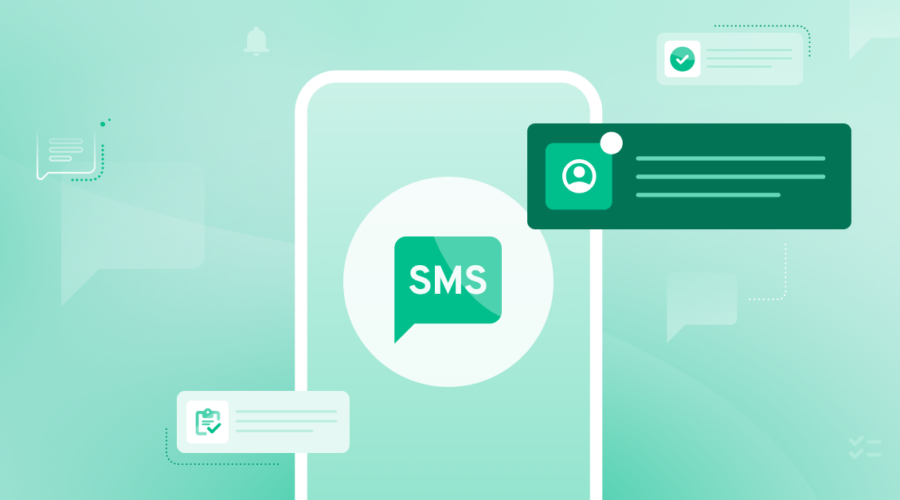If your business is expanding outside the US, there are a lot of new messaging channels to explore, and like learning a new language, adopting them can be daunting. But, the more you look around, the more you may notice similarities.
Is your global messaging strategy one-way or two-way?
The best approach to understanding your channel options is to first understand the nature of the communications you’re sending. This means knowing the nature of your customer’s communications – or often more likely – those of your customer’s customer.
Usually, these communications can be organized into one of two categories: notifications, or conversations.
Messaging notifications often require action (ex: click this URL to confirm your appointment, or, enter this one-time password on another device) but ultimately don’t require a dialogue to accomplish the job. Think about:
- appointment reminders
- opted-in sales promotions
- critical alerts
- 2-factor authentication
Messaging conversations require a response. These create a dialogue between the business and the end user, where real-time engagement – with either a person or a bot – is important. Think about:
- Customer support or service
- Reservations & confirmations
- Sales or account team engagement
- Surveys
So, what messaging channels should you consider to support either of the above?
Global notifications
When it comes to global notifications, there’s an obvious heavy hitter in the SMS space, and that’s Alphanumeric SMS.
Alphanumeric SMS is a form of Application to Person (A2P) messaging that allows outbound messages to be sent from a business’s Alphanumeric Sender-ID, instead of a number, to a mobile subscriber. These sender-IDs can contain letters, numbers, and spaces, so that businesses can send messages from a brand name, rather than a number.
It’s a great tool for leveraging brand recognition for customer engagement and experience. Instead of a number, mobile users will see a message from a favorite brand or familiar business in their text inbox—a more attractive look and feel before the person even clicks to open the message.
Alphanumeric SMS is a 1-way channel in the truest sense. Unlike Short codes in the US, it does not offer any text-back functionality such as “YES/NO” or numerical responses, making it an obvious choice for communications that don’t require a response.
Unlike numbers, Alphanumeric Sender-IDs are not available for purchase from messaging vendors. In some countries they can be immediately provisioned to send, while in others they are subject to registration requirements first, so it’s important to have a messaging partner that can help you navigate the differences country-to-country.
Global conversations
SMS remains the most ubiquitous messaging channel globally, with 6 billion consumers predicted to send and receive text messages by 2025 and with text message open rates at 98%. But, as consumers become more accustomed to texting with their favorite businesses, consumer preferences become more central to adoption. That’s why businesses must consider both SMS and Over-the-top applications when it comes to conversations.
Over-the-top applications
Over-the-Top (OTT) apps and services are used over the Internet rather than over the networks of a traditional wireless, wireline, or cable operator. WhatsApp, Facebook Messenger, Telegram and WeChat all represent popular OTT messaging applications.
The rich user experience is what draws many businesses to various OTT messaging solutions. While OTT messages mimic SMS and MMS in many ways, they offer added benefits like:
- Multimedia images: No fixed file size means more visually engaging content.
- Group messaging: Allows multiple people to communicate at the same time and place.
- Audio and video calling: Seamless quality without worrying about data disruptions.
- Highly accessible: The popular OTT app, WhatsApp, is available in over 180 countries!
Global 2-Way A2P SMS
And yet, just as in the US, SMS is available on every mobile device globally and requires no application to download, making it even more accessible and widespread than OTT apps. So, what’s to consider in SMS globally?
2-Way A2P SMS is available in the US through 10DLC and Toll-Free messaging channels (and short codes too, to a limited extent), named after their respective number types. But, for countries and geographies outside the US and Canada, other number types can support a similar conversational business messaging channel. Bandwidth enables Global Mobile Numbers for 2-Way A2P messaging because this number type historically outperforms others in open rate (for SMS) and answer rates (for calls), based on Bandwidth’s customer feedback.
But unlike 10DLC and Toll-Free messaging, global messaging traffic compliance is not necessarily overseen by a centralized administrators industry established best practices but is instead managed country by country with varying requirements and regulations.
These requirements (which include “Know Your Customer”, or “KYC” requirements) are focused on ensuring that messaging providers understand their customers’ businesses and the services they provide before supporting messaging traffic. As with every channel, having a dedicated messaging partner to help you navigate these requirements as you expand internationally is critical.
Ready to join the global messaging conversation?
Business messaging is becoming more ubiquitous by the day, but there’s still a whole world to explore. With a consistent open rate of 98%, SMS continues to be the customer communication tool of enterprises, no matter where your business lands across the globe.
Get grounded in the current messaging landscape
Learn about the latest trends and developments in business text messaging in the 2024 State of Messaging.





